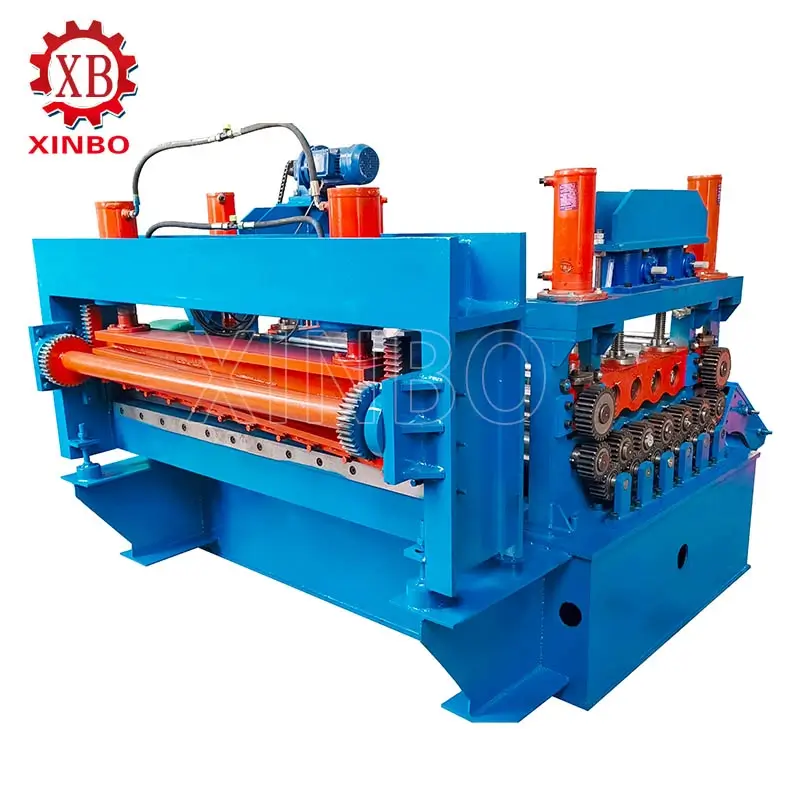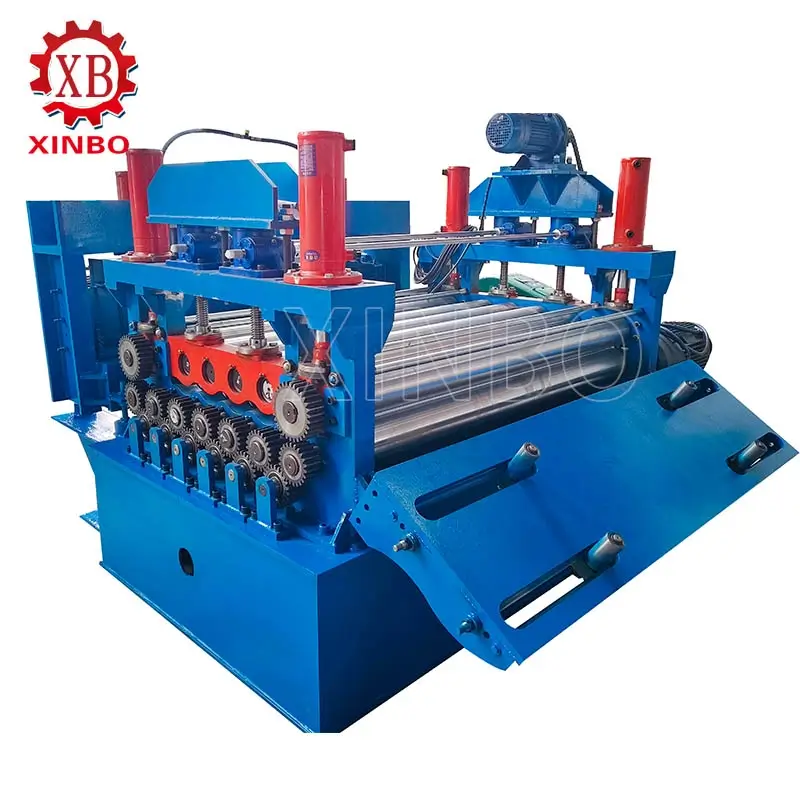Good quality
XinBo machine making CO. LTD is a professional manufacturer and exporter in roll forming machine,
VIEW MORE→Sheet metal processing is a key part of modern manufacturing. It helps make parts for industries like construction and aerospace. For thicker materials, such as 5-6mm sheet metal, getting a flat surface and precise cuts is crucial for tasks like welding, bending, and assembly. A 2in1 sheet metal flattening and cutting machine combines these two important steps into one smooth system. This article covers the workflow, parts, technical details, uses, benefits, and maintenance needs of these machines.

The workflow of a 5-6mm thickness sheet metal flattening and cutting 2in1 machine includes several steps that work together:
The process starts with a decoiler. It unwinds the sheet metal from a coil. For heavy-gauge sheets, the decoiler must be hydraulic. It needs to handle strong tension.
The sheet metal moves into the leveling section. It passes through many upper and lower rollers set in a staggered pattern. This step removes internal stresses using the Bauschinger effect.
After flattening, the sheet metal goes to the cutting section. Hydraulic shears with hardened steel blades make clean cuts. The cuts stay within ±2mm tolerance.
Flatness and size accuracy are checked using sensors or manual inspection.
Cut sheets are stacked automatically or moved to the next production stage. This reduces manual handling.
The “2in1” feature may come from one machine with both leveling and cutting parts or a production line where separate machines are linked by automated feeding systems.
A typical 5-6mm thickness sheet metal flattening and cutting machine includes:

Typical technical details include:
These specs ensure thick metals are processed quickly while keeping precision.
Flattening and cutting 5–6mm thick sheet metal in one process makes these machines vital for many industries.
Used to make structural parts like I-beams, channels, and columns. Also used for roofing panels needing accurate cuts for proper setup.
Helps create car body panels, chassis parts, and structural supports.
Makes fuselage panels and wing parts. Flatness ensures aerodynamic performance.
Produces hull plates and deck panels. Pre-flattened sheets reduce welding issues.
Creates parts for wind turbines or solar panel frames. These need the strength of heavy-gauge flattened metals.
Flattening removes internal stresses. Precise cutting reduces size errors. Both improve final product reliability.
Combining flattening and cutting in one machine or line cuts handling steps. This speeds up production a lot.
Automation lowers labor costs. Less waste means better material use.
Machines handle various materials like carbon steel, stainless steel, and aluminum across different widths and shapes.
Automated systems reduce manual lifting risks. Sensors prevent operational dangers.
Integrated designs use less floor space than separate units for each function.
These machines support different metals:
Proper maintenance keeps machines running well:
Check rollers for wear. Replace or fix them every few months, depending on use.
Keep shear blades sharp to avoid burrs. Check often due to high-force cutting.
Regular lubrication reduces wear on moving parts. Use oils recommended by the manufacturer.
Watch for leaks or sensor issues. Routine checks keep control accuracy steady.
Regular calibration ensures consistent flatness and cut sizes across batches.
Sheet metal flattening and cutting in one system gives manufacturers a big advantage in quality and efficiency. From construction beams to aerospace panels, these machines deliver great precision for thick-gauge materials. They save time and cost through automation. With flexible design options tailored to specific needs and strong engineering for various metals, these machines offer more than just productivity. They provide long-term reliability and adaptability in changing industrial settings.
XinBo machine making company, a 100% manufacturer started in 2014, designs roll forming equipment tailored to customer needs. Roll forming machines are made to fit customer requests. Machines can be compact to fit within container sizes for lower shipping costs, such as one 20feet or 40feet container. XinBo’s solutions meet CE standards. The machines are widely used for their smart design and modern development. The company exports to places like Europe, the Middle East, Africa, including the United Kingdom, Poland, the USA, Brazil, and Tanzania. With full support from design to after-sales service, XinBo supplies guaranteed quality products and one-stop service for designing, assembling, installation, and after-sales.
A1: XinBo’s custom machines can process at least 5–6mm thick sheets, based on customer design specs.
A2: Yes. The professional design team builds machines to meet customer requirements.
A3: Machines can process carbon steel, stainless steel, aluminum alloys, and others. Each needs specific setup adjustments.
A4: Inquiries are answered within 24 hours. Lead times depend on customization but prompt replies are guaranteed.
A5: Yes. XinBo provides guaranteed quality products and services for designing, assembling, and installation worldwide.

XinBo machine making CO. LTD is a professional manufacturer and exporter in roll forming machine,
VIEW MORE→

